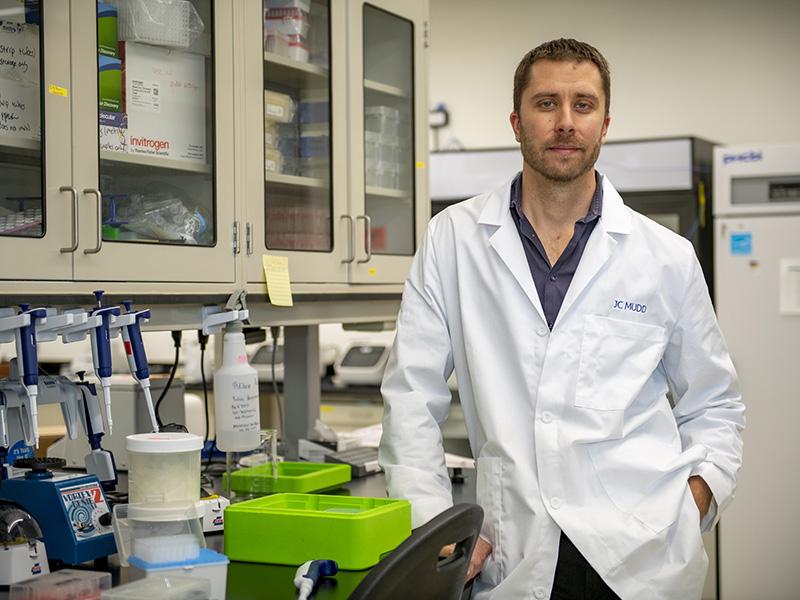Could a common virus be a barrier to curing HIV? Tulane University awarded $4.1 million to find out
Researchers at Tulane University will use a new $4.1 million grant from the National Institutes of Health to investigate how a common virus may help HIV persist in viral reservoirs and out of reach of leading antiretroviral therapies.
These viral reservoirs are the main hurdle to curing HIV as the virus rebounds if patients stop taking the life-saving antiretroviral therapies, or ART, that keep HIV at undetectable levels in the blood.
Lead investigator Joseph Mudd, PhD, assistant professor of microbiology and immunology at the Tulane National Primate Research Center, will investigate how long-term ART and coinfection with cytomegalovirus, a common virus, may contribute to the persistence of this viral reservoir, preventing successful clearance of HIV from the body.
For those living with HIV, management of the infection requires a consistent and often life-long commitment to ART, which prevents viral replication in infected CD4 T cells, a type of white blood cell. ART prevents the virus from replicating, but does not eradicate latently infected cells from the body.
Those infected with HIV are also nearly universally coinfected with cytomegalovirus, or CMV, a latent herpes virus that causes no issues or symptoms for those with healthy immune systems. As a coinfection with HIV, CMV continually stimulates the division of CD4 T cells, some of which may be latently infected, contributing to the size and persistence of the HIV reservoir.
Using a nonhuman primate model of infection, Mudd and his team will evaluate how the HIV reservoir behaves in both CMV-negative and CMV-positive subjects receiving ART treatment, and assess how the persistence of the HIV reservoir is affected by the addition of antiviral treatments that specifically target CMV.
In doing so, Mudd seeks to identify how CMV infection may contribute to sustaining the HIV reservoir, and understand how CMV-targeted antivirals might be used to accelerate the clearance of HIV from the body.
“Antiretroviral therapy is certainly remarkable in what it has accomplished,” Mudd said. “Still, the goal of fully eradicating HIV from the body remains. I am hopeful that by concurrently treating viruses in addition to HIV that continually stimulate the immune system, we can target a potentially important factor that is sustaining the HIV reservoir over time.”
This five-year study is funded by National Institute of Allergy and Infectious Diseases.

